Honda MC (2020) Effective Vertical Transport of Particulate Organic Carbon in the Western North Pacific Subarctic Region. Front. Earth Sci. 8:366. doi: 10.3389/feart.2020.00366
Cruise observation in FY2020
Western Pacific subarctic – subtropical regions
R/V Mirai (MR21-01: 2021/2/13-3/24)
「Influence on Marine ecosystem at western north Pacific by Atmospheric Chemical Trace Species from East Asia(“IMPACT-SEA” project)」
Recovery / Redeployment of sediment trap mooring system, and interdisciplinary observations at KEO, K2 and other stations.
Details of the cruise observations (1): Time-Series Sediment Trap Experiment at KEO
Time-series sediment traps at 1800 m and 4800 m of station KEO were recovered and re-deployed.
Mar. 6 Recovery
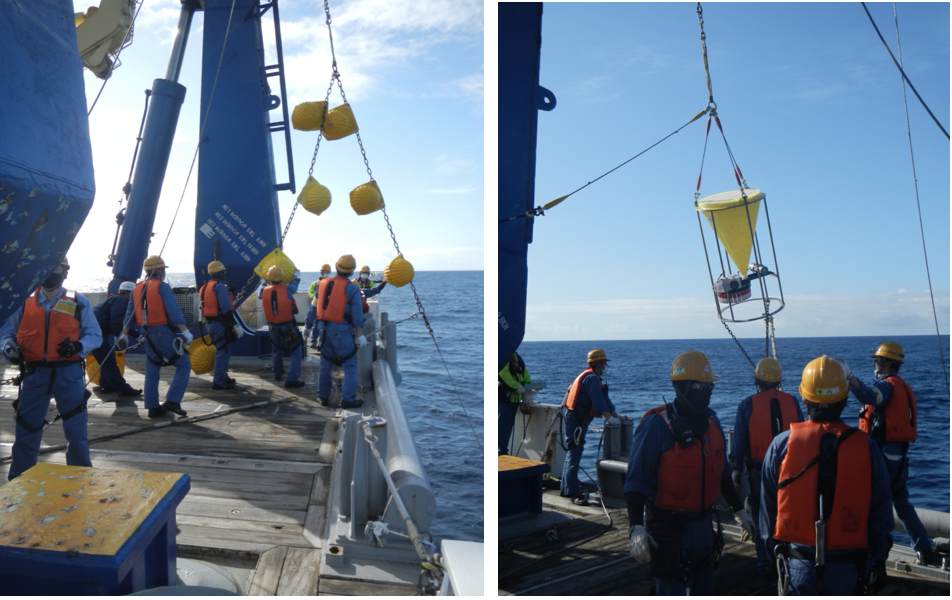
Mar. 7 Deployment
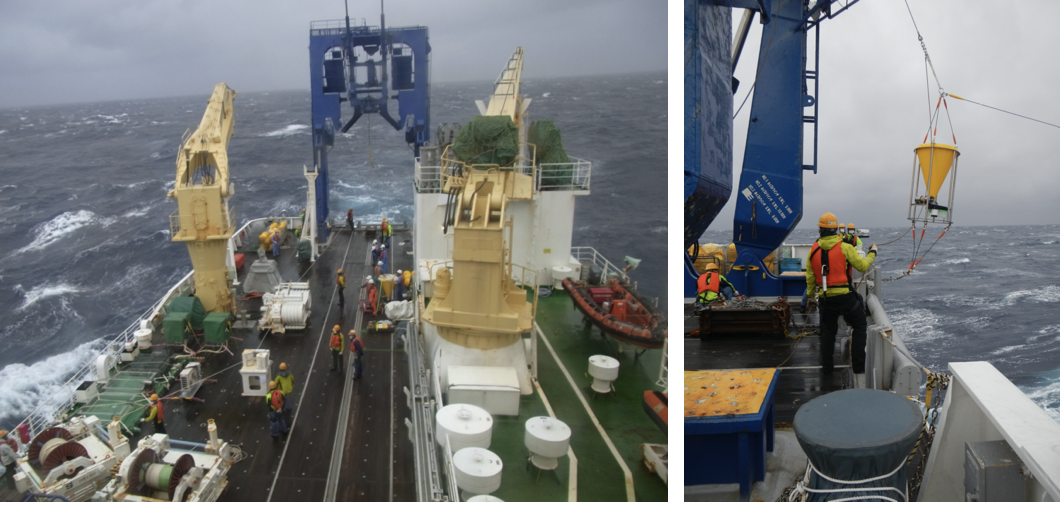
Temporal variability in Total Mass Flux at 1800 m and 4800 m (preliminary result)
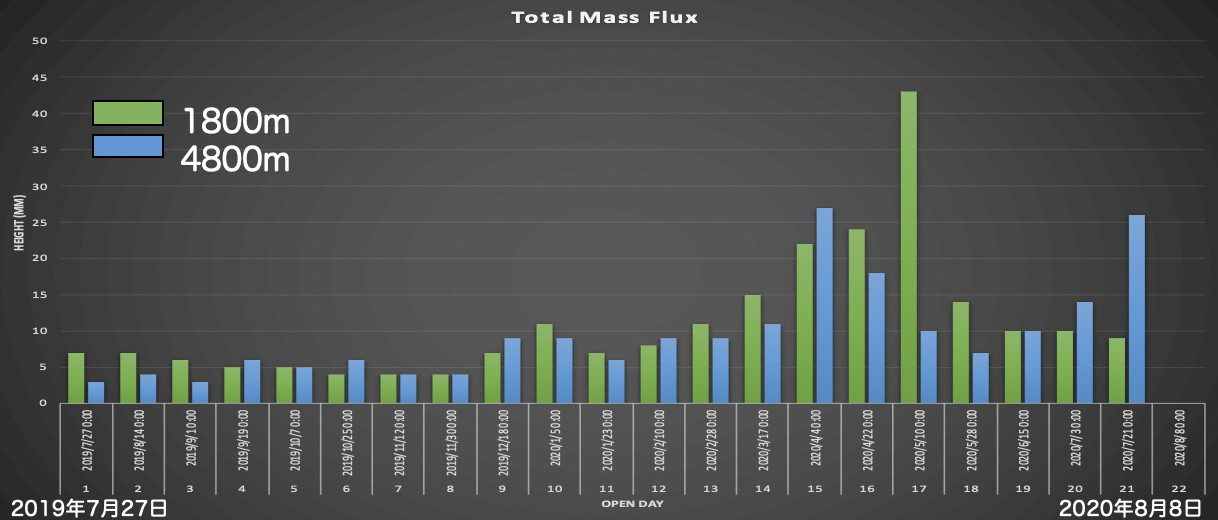
○The first data from 1800 m
●Missing nutrients source in the subtropical region
●Origin of terrestrial materials including micro plastic
●Interannual variability in settling particles

Details of the cruise observations (2): Experiments of primary production
Primary production of phytoplankton were measured in subarctic and subtropical waters in winter.
Phytoplankton incubation experiment
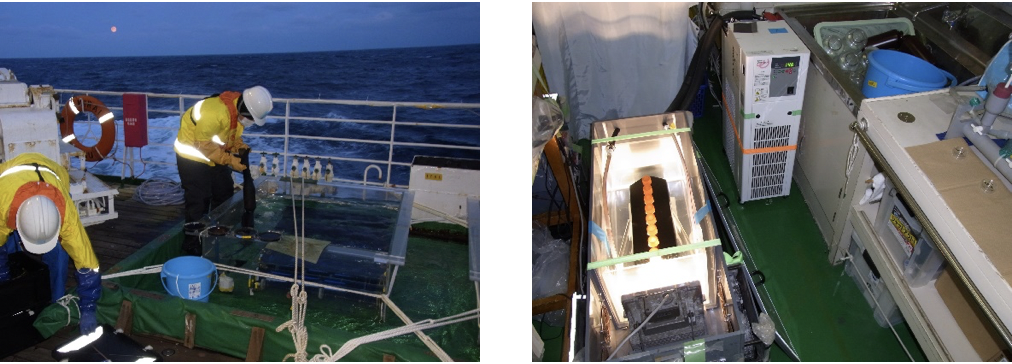
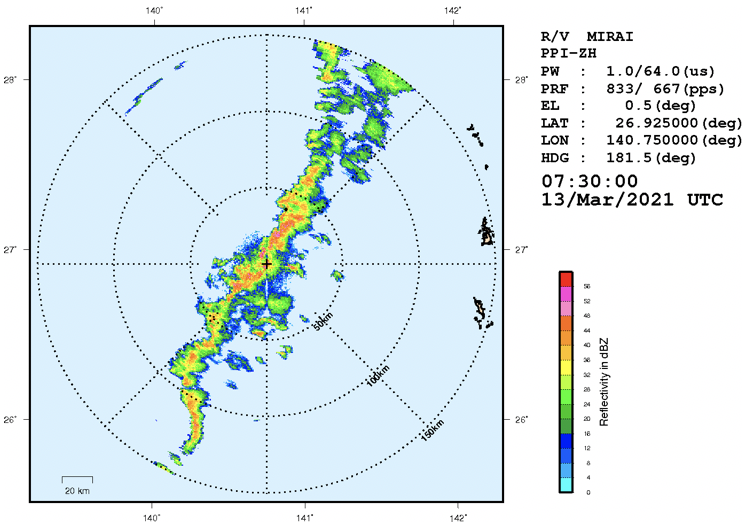
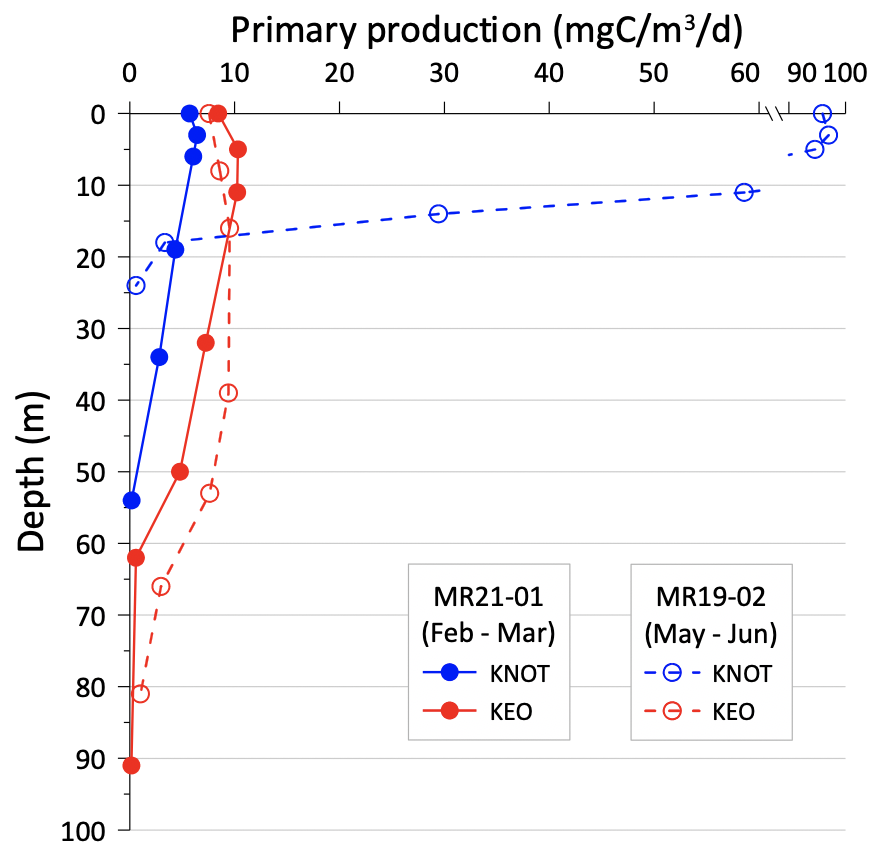
Topics
Topic 1: Effective CO2 transport to the ocean interior in the North Pacific Subarctic Gyre
Background
Particulate Organic Carbon (POC) plays a crucial role in atmospheric CO2 transport to the ocean interior. For better understanding the global carbon cycle, the intensity of POC vertical transport, i.e. the Biological Carbon Pump (BCP), should be quantified precisely.
Knowledge gap
What mechanism control the intensity of the BCP ?
This study
Vertical change in POC flux in the North Pacific Subarctic gyre (station K2) and Subtropical gyre (station S1) were compared and the mechanism to control the BCP was discussed.
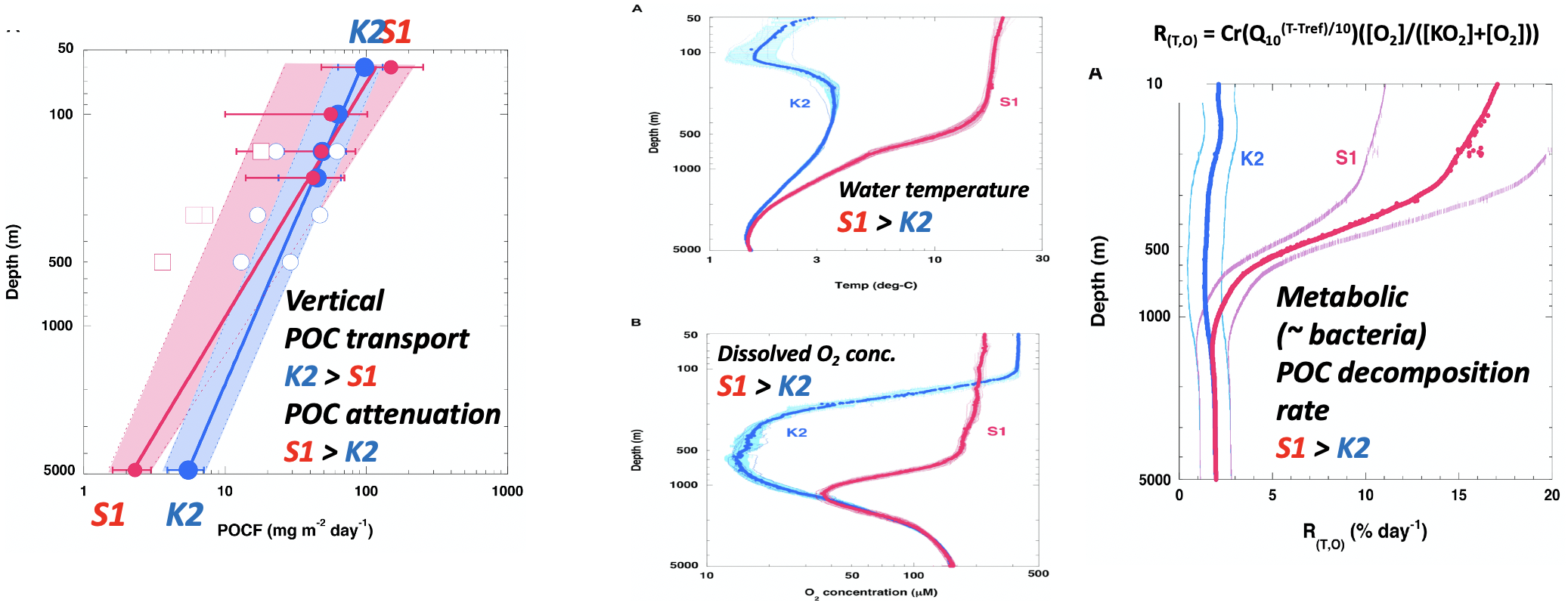
Topic 2: Subtropical blooms dictated by water column stability in the northwestern Pacific
Background
Phytoplankton blooms observed between winter and spring in the northwestern Pacific subtropics.
Knowledge gap
Less observational knowledge compared to the summer bloom in the central Pacific subtropics.
This study
Blooms by episodic stratification in winter, seasonal stratification in early-spring, stratification breakdown in late-spring, with smaller bloom when winter mixing is weak and larger bloom when it is strong.
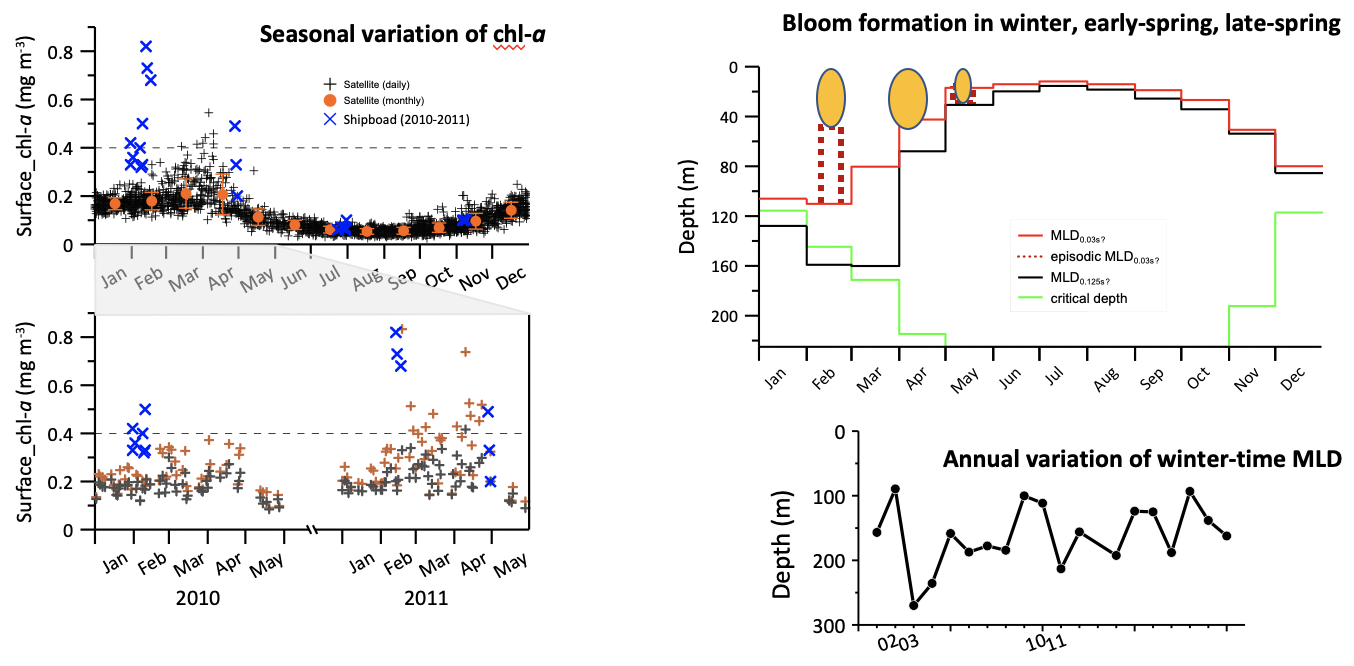
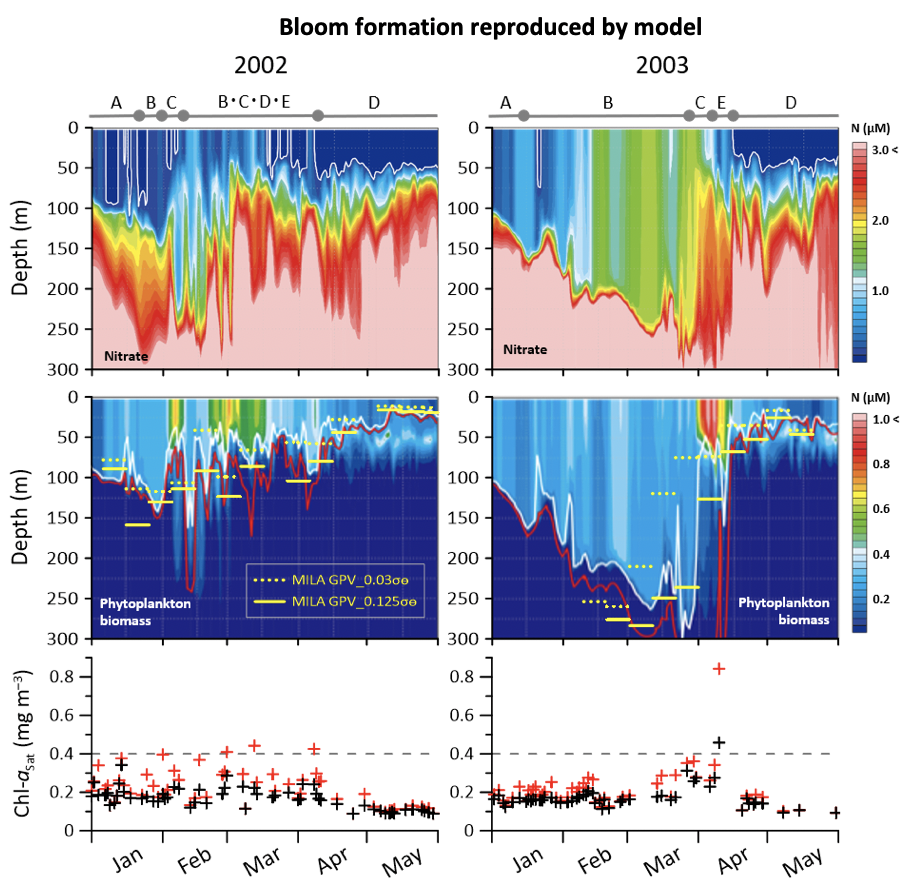
Matsumoto, K., Y. Sasai, K. Sasaoka, E. Siswanto, M. C. Honda (2021), The formation of subtropical phytoplankton blooms is dictated by water column stability during winter and spring in the oligotrophic northwestern North Pacific. Journal of Geophysical Research: Oceans,126, e2020JC016864. https://doi.org/10.1029/2020JC016864
Topic 3: Development of satellite-based near-real-time observing system
Background
The Asian coastal waters are surrounded by densely populated countries and are vulnerable to climate changes.
Knowledge gap
Eutrophication and red tide outbreaks are common problems that lead to ecological, economic, and societal adverse impacts in the Asian coastal waters.
This study
For the purpose of monitoring ocean color properties, particularly red tide outbreaks, development of a near-real-time satellite-based observing system (NRT-OS) that covers the Asian waters has been initiated. The NRT-OS will relay NASA/MODIS moderate-resolution (1000-m) and Japanese GCOM-C/SGLI high-resolution (250-m) data/images through the Japan-Asia Coastal Monitoring System web (JASCOMS). Red tide and eutrophication algorithms are now being developed to be implemented in this system.
